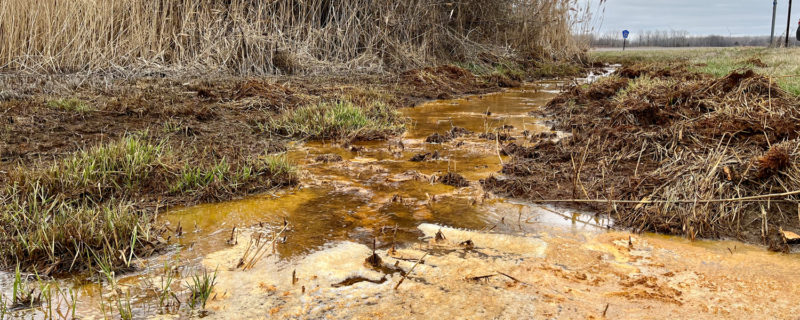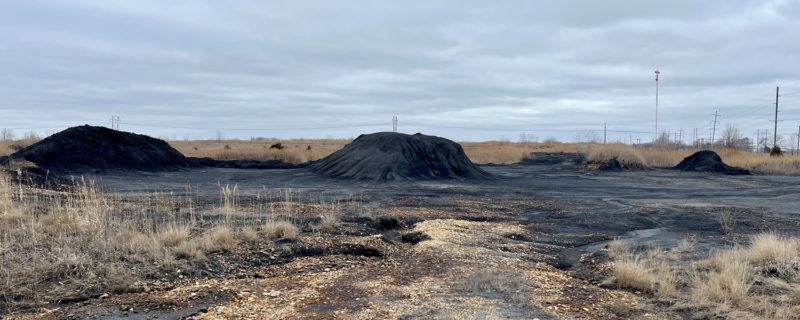Less than 30 miles south of Champaign, rust orange water flows in the roadside ditch along U.S. Route 36. This polluted, acidic water is flowing off an unreclaimed “Zombie Coal Mine.” The Murdock Mine in Douglas County was last mined in the 1990s, well after the passage of the 1977 federal Surface Mining Control and Reclamation Act (SMCRA). The law put into place requirements that hold coal companies responsible for clean up of these “modern-era” mines, a process called reclamation. Modern-era mines are in contrast to the pre-law, “Abandoned Mine Lands,” that were mined before SMCRA went into effect. The requirements on modern mines include bonding; a financial guarantee provided by the mine to be used for reclamation. Companies are required to conduct reclamation shortly after mining is completed.

Murdock Mine is an example of a modern-era mine where the law has fallen short, reclamation has gone terribly wrong, and polluted water still flows from the site today. Stories similar to Murdock Mine, involving coal bankruptcies, ongoing Clean Water Act violations, insufficient reclamation bond funds, and shirked reclamation responsibilities, are occurring across the nation’s coal producing states. These problems are worsening. SMCRA’s reclamation assurances don’t function well as the coal industry declines. For example, enforcement mechanisms, such as fines and denial of new permit applications, have little impact on coal companies in or nearing bankruptcy.
Our environmental partners in Appalachia have coined the term “Zombie Mine” to describe unreclaimed modern-era coal mines. A 2024 report by Appalachian Citizens Law Center found that 40% of active coal mines in Kentucky haven’t produced coal in at least three years, some for over a decade. Evidence suggests that the companies are avoiding reclamation responsibilities by remaining active or idle, instead of closing. A 2021 analysis by Appalachian Voices estimated the actual cost of outstanding reclamation on over 600,000 acres in seven eastern coal mining states is between $7.5 to $9.8 billion. The available bonds in those states totaled only $3.8 billion. There are countless examples where unexpected water quality problems arise and bond amounts are not sufficient to clean up the problem.
In Illinois, the subject of modern-era mine reclamation has not been extensively studied. As of 2022, an estimated 32,500 acres of current coal mines in Illinois required cleanup, with only 6,600 acres partially reclaimed. A single company, Indemnity National Insurance Company, covers 68% of all reclamation bonds in Illinois. Indemnity is also the largest single provider of coal reclamation bonds nationally, providing nearly $2 billion in bonds for mining companies in at least 11 states. The bankruptcy of even one large coal company could jeopardize the financial health of Indemnity, impacting the operation and reclamation of many other mines.

In response to the Zombie Mine problem, PRN joined over 50 other organizations in support of a new federal policy platform aimed at reforming SMCRA to ensure the adequate and timely clean-up of modern-era coal mines. The Zombie Mine platform outlines changes that would:
- Establish a new system of financial assurances for reclamation and provide reform for existing bonding practices.
- Require more timely reclamation and ensure compliance with water monitoring and Clean Water Act requirements until reclamation is complete.
- Close loopholes that allow companies to transfer permits and shirk reclamation responsibility through bankruptcies.
- Strengthen mine closure planning requirements and public engagement.
PRN thanks our partners in Appalachia for leading this work. We remain committed to supporting Illinois coal communities and advocating for policies that prioritize environmental stewardship, public health, and economic resilience. Visit ZombieMines.org to learn more.
By Jizelle Torres and Amanda Pankau







